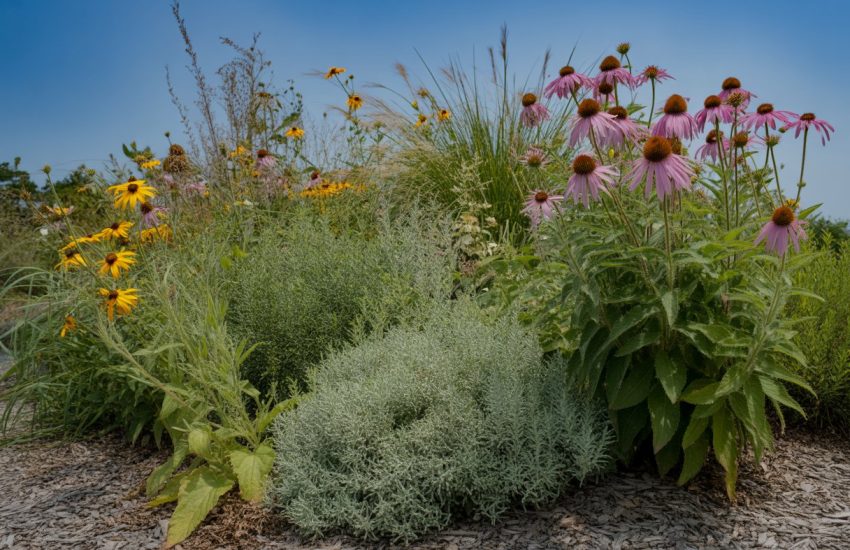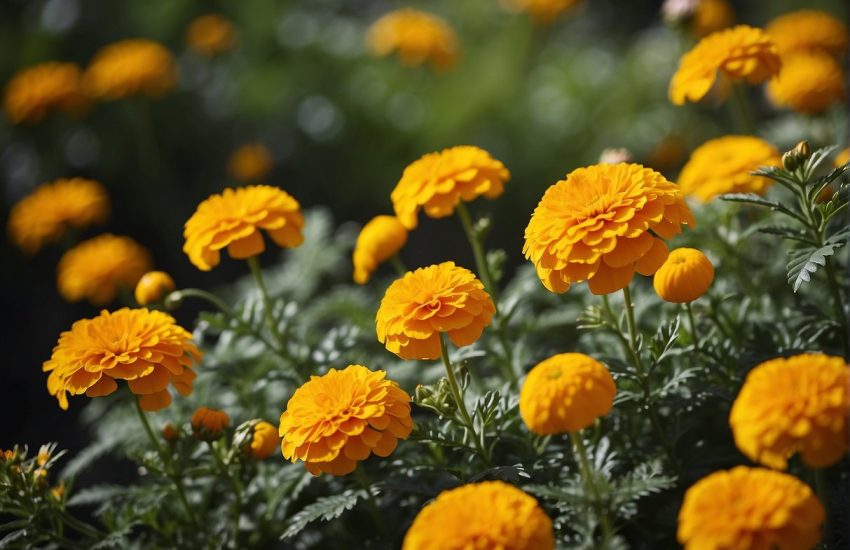Benefits of Planting Native Ferns for Sustainable and Low-Maintenance Gardens
Planting native ferns brings a bunch of environmental and practical perks. These plants already know how to handle local conditions, so they usually need less water and attention than non-native species.
That’s a win for sustainability—your garden supports the local ecosystem and you don’t have to fuss so much.
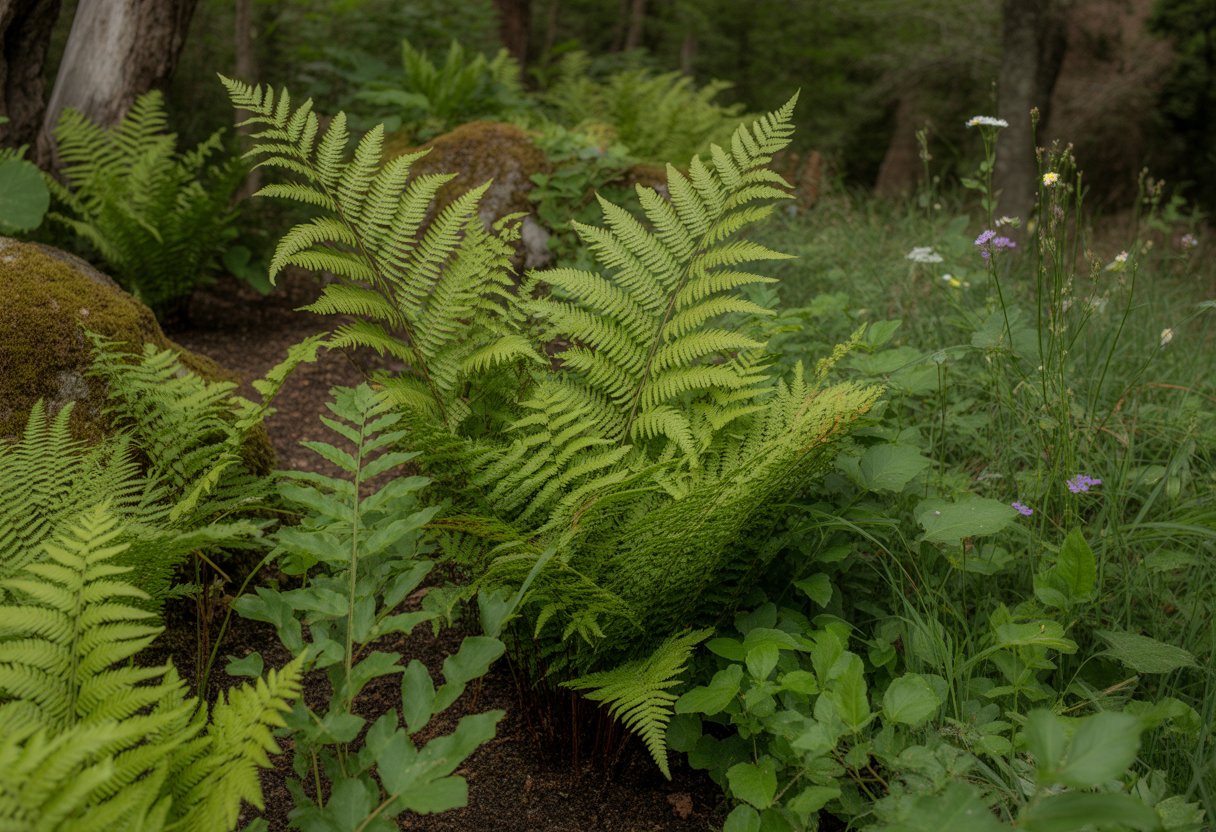
Native ferns offer crucial habitat and food for local wildlife, which boosts biodiversity. Their roots dig deep, holding soil in place and naturally improving its health.
When you pick native ferns, you help keep the landscape true to its roots. These ferns blend right in with other native plants, making the whole garden feel balanced and tough.
Ecological Benefits of Planting Native Ferns
Native ferns really pull their weight in local ecosystems by supporting a mix of plants and animals. They help native species thrive, keeping natural cycles humming along.
Increasing Local Biodiversity
When you plant native ferns, you add to local biodiversity by giving all sorts of creatures a place to live. Ferns make the coolest, shadiest underlayers in forests, which mosses, fungi, and tiny critters absolutely love.
Their roots keep the soil anchored, stopping erosion and giving other native plants a better shot at growing. Since native ferns don’t bully their neighbors like some invasive species do, more plants can share the space, and overall biodiversity sticks around.
Supporting Wildlife and Pollinators
Native ferns shelter and provide nesting spots for lots of wildlife. Small mammals, amphibians, and insects find cover or a home among the fronds.
Ferns don’t have flowers, but they help native pollinators in a roundabout way by keeping habitats healthy for nearby flowering plants. When ecosystems are stable and full of plant variety, pollinators do better, and so does everything else.
Enhancing Healthy Ecosystems
Ferns, being some of the oldest plants around, play a big part in recycling nutrients and keeping ecosystems steady. Their roots help air and water move through the soil, which is key for healthy dirt.
Native ferns hang out with local microbes and fungi, creating partnerships that help all the plants nearby get more nutrients. That kind of teamwork keeps everything in balance.
When you plant native ferns, you’re making the ecosystem tougher against things like drought or invasive species.
Habitat Value and Environmental Impact
Native ferns quietly boost plant communities and make soil better. They stabilize the landscape, so they’re a big deal for restoration and conservation work.
Natural Habitat Creation
Native ferns add habitat complexity by offering shelter and keeping moisture around for wildlife. They hang out with wildflowers, shrubs, and mosses, layering the vegetation and giving insects, amphibians, and small mammals places to hide.
Their presence helps keep native plant communities intact, making it harder for invasive species to take over after disturbances. Pollinators show up more often when the whole plant mix is healthy.
Ferns even cool things down under their fronds, which is a lifesaver in woodland habitats that keep shrinking.
Erosion Control and Soil Health
Fern roots grab onto soil and hold it together, especially on slopes or near water. Their thick coverage shields the ground from rain, cutting down on runoff and keeping the topsoil where it belongs.
When fern leaves break down, they add organic matter that feeds the soil and helps it hold water. This supports the microbes that make soil healthy.
By stopping erosion, native ferns keep sediment out of streams and rivers, which helps protect water quality and aquatic life. They’re especially useful in places where the original plants have been wiped out.
Resilience to Climate Change
Native ferns just get local weather—they can ride out droughts and heavy rain better than most outsiders. That means the habitats they create are more likely to survive wild swings in climate.
Ferns also help lock carbon into the soil with all the organic stuff they add. Their ability to stick around in tough spots helps buffer against habitat loss as the climate changes.
Supporting Native Wildlife
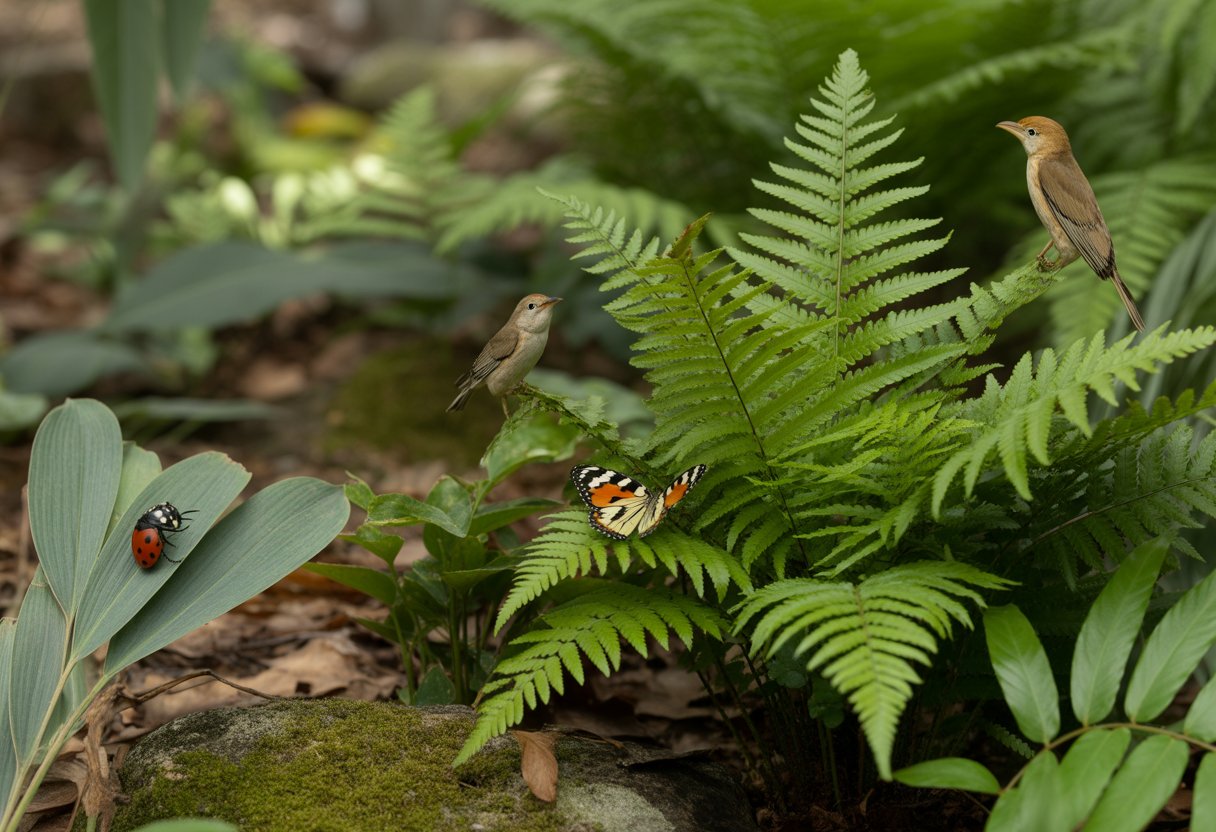
When you plant native ferns, you’re building a home where local wildlife can actually thrive. Birds, insects, moths, and butterflies all depend on these plants for food, shelter, and raising their young.
Attracting Beneficial Insects and Birds
Native ferns give birds and native bees great spots for nesting and hiding. The thick foliage keeps them safe from predators and rough weather, which is huge for bird populations everywhere.
Ferns also attract beneficial insects by hosting larvae and drawing in nectar sources close by. These insects, especially native bees, help pollinate and keep pests in check. It’s a win-win for the whole garden.
Catering to Moths and Butterflies
Some moth species actually eat fern fronds as caterpillars, and butterflies use ferns as a safe place to rest and hide. The little worlds under fern leaves keep things damp and cool—just what moths and butterflies need to survive.
This helps these pollinators stick around, which benefits a ton of other plants too.
Landscape and Gardening Advantages
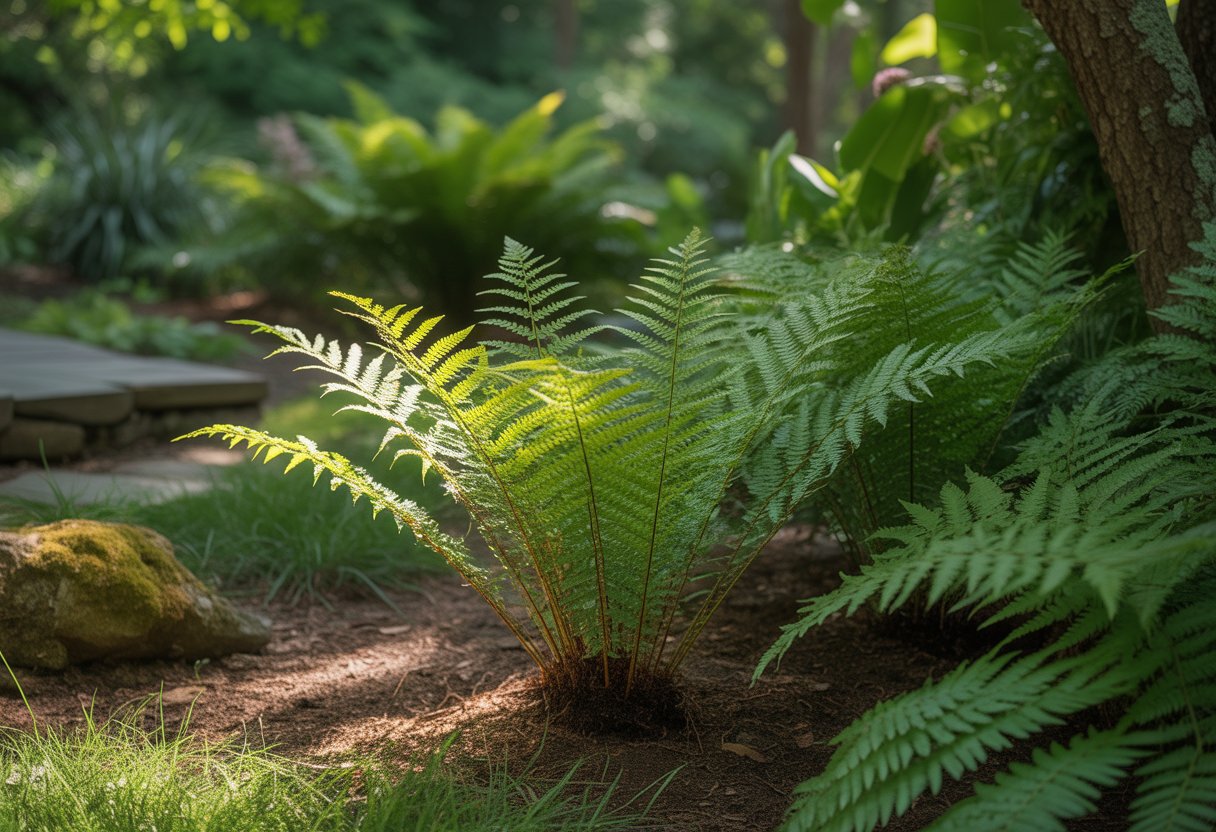
Native ferns aren’t just good for nature—they make gardens look better and easier to care for. They fit into lots of planting styles and keep the place green and textured all year.
Ideal Growing Conditions for Native Ferns
Native ferns really shine in shady, moist spots like woodland gardens. They love growing under oak trees or other big trees where the light is soft and dappled.
Their fronds and fiddleheads do best in rich, well-drained soil with plenty of organic matter. Unlike fussy imports, native ferns can handle the local climate and soil, so you won’t need to dump on extra fertilizer or water.
Some, like tree ferns, want slightly different conditions, but they still fit in with the native crowd if you give them some shelter and shade. Picking native ferns just makes the garden more solid and natural-looking.
Promoting Companion and Accent Plants
Native ferns make fantastic ground cover, keeping soil damp and stopping erosion. Their shady leaves protect seedlings, creating little microclimates that help other woodland plants and wildflowers get started.
They play well with flowering plants and shrubs, adding texture without taking over. Their presence keeps things balanced and supports wildlife that needs a mix of plants.
Mixing native ferns with the right companions not only looks good—it’s healthier for the garden. Plus, this approach lines up with the eco-friendly ideas you’ll see at native plant sales and in conservation circles.
Low Maintenance and Year-Round Interest
Many native ferns, like evergreen ferns and deciduous ferns, offer visual interest all year. Evergreen types keep their green fronds even in winter.
Deciduous ferns lose their leaves but send up fresh fiddleheads in spring, which feels like a little celebration of the new season. I always look forward to that.
Native ferns adapt well to local conditions, so you won’t need to fuss much with pruning, fertilizer, or pest control. Once they settle in, they don’t ask for much water and help the soil take care of itself.
If you want a garden that mostly takes care of itself, native ferns are a solid bet. They keep things looking good without a ton of effort.

